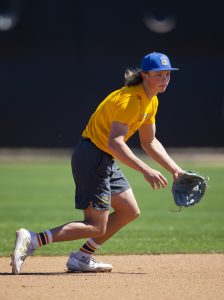Here is today’s roundup of top-39 (first round, supplemental round, Competitive Balance Round A) draft picks who have signed their first pro contracts. For further reference, here is the full list of recommended slot prices, and you can click the links for full pre-draft rankings and scouting reports from Baseball America, Fangraphs, MLB Pipeline, The Athletic’s Keith Law, and ESPN’s Kiley McDaniel.
- The Mariners have signed their picks from the first three rounds, according to MLB.com’s Daniel Kramer (Twitter link). This includes 21st overall pick Cole Young, who received a $3.3MM bonus that is slightly above the $3,292,900 slot price. The high school shortstop was a consensus pick in the 12-20 range by evaluators, and is considered to have a high floor as an all-around talent and future big leaguer, though there is some question whether he has the skillset to be a regular starter.
- The White Sox agreed to a deal with left-hander Noah Schultz, according to Jim Callis of MLB Pipeline. (The Sox officially announced Schultz’s signing later in the day.) Schultz’s $2.8MM bonus is also a touch above the $2,789,400 assigned to the 26th overall pick. A local product born in Napierville, Illinois, Schultz is already 6’9″ at age 18, and owns a plus slider and an unconventional low-slot delivery. McDaniel was the highest of the pundits on Schultz’s potential, ranking the southpaw 34th in the draft class.
- The Reds agreed to sign Sal Stewart for $2,097,500, Callis reports. This is under the $2,373,000 slot price attached to the 32nd overall selection, which could reflect a slight reach on the Reds’ part — BA was the highest on Stewart with a 58th overall ranking, and Law had Stewart 59th. That said, McDaniel thought Stewart could be something of a tough sign due to his commitment to Vanderbilt, but the high school third baseman will instead forego college for the minor leagues.
- The Orioles announced the signing of Dylan Beavers, the 33rd overall selection. Nathan Ruiz of The Baltimore Ruiz (Twitter link) reports that Beavers received a $2.2MM bonus, providing the O’s with some savings under the $2,315,100 slot price. Pipeline ranked the Cal outfielder 22nd in its rankings, writing that “when Beavers is locked in, he’s the proverbial five-tool player,” though Beavers had had some issues staying consistent.
 Time will tell if Holliday can approach a Hall-of-Fame or All-Star level, but the 18-year-old is one of the more highly-touted members of the 2022 draft class. Fangraphs and MLB Pipeline each ranked Holliday as the second-best prospect of the class, with Kiley McDaniel and Baseball America each slotting Holliday third on their rankings, and The Athletic’s Keith Law rated Holliday sixth.
Time will tell if Holliday can approach a Hall-of-Fame or All-Star level, but the 18-year-old is one of the more highly-touted members of the 2022 draft class. Fangraphs and MLB Pipeline each ranked Holliday as the second-best prospect of the class, with Kiley McDaniel and Baseball America each slotting Holliday third on their rankings, and The Athletic’s Keith Law rated Holliday sixth.